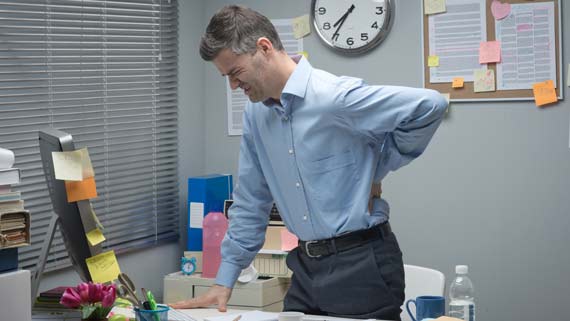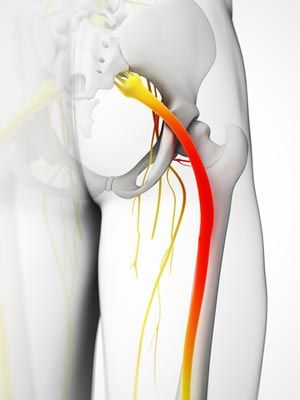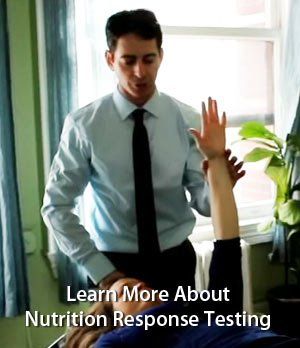Sciatica Treatment - Dr. Louis Granirer Holistic Chiropractor

"Sciatica is not an illness, like most people believe it to be. It is just a symptom of another disorder causing your pain. I have a long and proven history of helping people overcome the pain and discomfort of Sciatica."
-Dr. Louis Granirer
NY Chiropractor
Treatment for Sciatica in Kingston Ulster County NY 12401
What is Sciatica?
Sciatica is the inflammation of the sciatic nerve, a nerve that extends from the base of the spine and down the leg. It can result in extreme pain that radiates at different points along the nerve, from the lower buttocks down to the feet. Sciatica is not a disease but a symptom that can be caused by various conditions.
Contact Dr. Louis Granirer
NY Chiropractor and Leading
Nutrition Response Testing Practitioner
For a Free Consultation
The most likely sciatica symptoms involve pain that starts in the lower spine and radiates down one or both of the legs. Sciatica is the result of a combined number of symptoms brought about by diverse problems in the spine. For example, you have a
herniated disc, and the fluid escaping from the tough outer fibers of the disc may be compressing the sciatic nerve, causing your pain and other symptoms.

Sciatica Pain Treatments
Living with sciatica is no easy task. Sciatica is a reasonably common health problem with a lifetime incidence (the number of individuals that have experienced sciatica at some point in their lives) varying from 13 to 40 percent.
The most common cause of sciatica is a herniated disc. Sciatica is a type of radiculopathy, which is a description of a problem in which one or more nerves are affected and do not work properly. Radiculopathies are disorders that affect nerve roots or nerves.
A variety of spine disorders can cause this lower back pain, including, but not limited to:
- Disc herniation
- Lumbar spinal stenosis
- Facet joint osteoarthritis
- Arthropathies, a disease or an abnormality of a joint
- Spinal cord infection
- Spinal cord tumor
- Spondylolisthesis, displacement of a lumbar vertebra producing pain by compression of nerve roots
Sciatica is often diagnosed and treated by a Chiropractor, specializing in the realignment of the spine. Making a diagnosis of sciatica starts with taking a thorough medical history, including a detailed list of symptoms. A Free Consultation will provide evidence to determine the origin of your sciatic pain and what is putting pressure on the nerves in the lower back. I will be able to make an accurate diagnosis based on your medical history, a physical examination, and your description of your symptoms.
Sciatic pain may last for weeks, months, and even years if left untreated. Standing, lifting, sitting, or straining any part of the back is likely to aggravate it. Lying down and taking pressure off your spine is usually the most comfortable position to feel immediate relief. Lower back pain and leg pain might also be caused by
sports injuries or a joint disorder, such as arthritis on the hip or sacroiliac joint. This type of pain, diagnosed properly, is called referred pain. It is quite common but is not sciatica.
Sciatic Pain Relief without Surgery
Pain relief from sciatica can easily be achieved without the need for surgery. In most cases, realignment of the spine provides long-term health benefits and pain relief. Regular maintenance, including exercise, ChiroYoga, and stretching, will support the healing process.
Exercises such as Pilates are helpful in correcting poor muscle tone and posture and restoring the strength of your back and stability. Pilates can often improve sciatic pain and also help to prevent future episodes. Exercise and diet are the two foundations of this approach. Another important observation is to review your routine daily activities and look for habits or postures that are placing stress on your back.
Exercising your abdominal and back muscles regularly may help you stabilize the spine. In order to avoid further back injury, you might consider learning some stretching exercises to keep good posture. ChiroYoga has also been shown to provide a long-term solution for a healthy spine.
Lower back pain ranks second only to the common cold as a leading reason for missed time at work by American workers. According to the National Institutes of Health, as many as a quarter of all American adults will experience lower back pain over any given three-month period, and eight of ten people will have lower back pain at one time in their life.
Since sciatic pain can be caused by any number of potentially more serious problems, it is important you come in for a consultation and prevent exposure to greater injuries, making matters worse. I specialize in the following treatments for your sciatica, which may be individual or used in combination to provide easy and convenient solutions for your discomfort:
- Flexion Distraction, which is a process that carefully realigns and adjusts the spine over a period of time.
- Muscle Testing, which is a holistic approach to the physical diagnosis of the strengths and weakness of the muscles in the area related to the proper function of nerves.
- Applied Kinesiology, which, in relation to muscle testing, is a treatment that targets improved movement of the head and shoulders.
- Nutrition Response Testing may be used to help heal the body from within. It is a healing and preventative treatment that contributes to improving overall wellness by properly fueling the organs in your body.
A Patient Case Study for Treatment of Sciatica
Diane is a 54-year-old woman who presented in my office with severe sciatica in her left buttock that radiated down to her left knee and left ankle. She was beginning her training for a marathon and was three and a half months away from her first New York City marathon. She indicated that she had been feeling a sensation of tightness in her left leg for a while, but she shrugged it off as her training miles were increasing.
A week before her initial visit, she started to feel pain in her leg and buttock while she was sitting at her desk at work. Diane was not happy when I told her she would have to stop running for now and that I would monitor her progress and decide when and if it was a good idea for her to continue her training. X-rays revealed that she had mild degeneration in the L4/L5 disc but nothing else remarkable. Diane revealed to me that she wasn’t able to take anti-inflammatory medication because she would get gastritis when she took them.
At her first visit, I found that Diane’s left leg was about a 1/2 inch shorter than her right, her left sacroiliac joint was posterior, her left Piriformis, left Iliopsoas, left Gluteus Medius, left Iliotibial band, right adductors, right Sartorius, and right femur head were muscle testing weak. I performed neurovascular, neurolymphatic, myofascial, trigger point work, a pelvic and lumbar vertebral adjustment, category three pelvic blocking, and
cold laser therapy. Diane was seen regularly for six weeks before her visits were reduced.
Her improvement was remarkable. Diane’s pain level reports of 9 out of 10 quickly dropped to 6 out of 10, and within three weeks, her pain levels were cut by more than 60 percent to 4 out of 10. By her sixth week of care, she reported pain levels of 1/10, and higher frequency of the pain was much less.
She insisted that she wanted to continue training for the marathon, and we had a long discussion that because of the time frame, the injury wasn’t completely stable yet. Diane decided that she would continue training and get maintenance
adjustments to help her body stay mobile.
Diane ran the marathon and finished in three hours and seventeen minutes. This was faster than any of her previous times, and wrote me an email indicating that she felt like her body was actually performing better than it had ever!
Contact Hudson Valley Chiropractor Dr. Louis Granirer for Relief of Sciatic Pain
We both share the same goal for your pain and overall wellness, so please contact me today. I believe my experience and proven track record of success in healing all kinds of spinal problems is a valid and effective remedy to reduce and eliminate your discomfort. I sincerely hope you will take advantage of my free consultation.
Contact Dr. Louis Granirer today.




